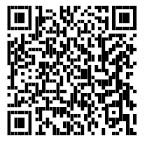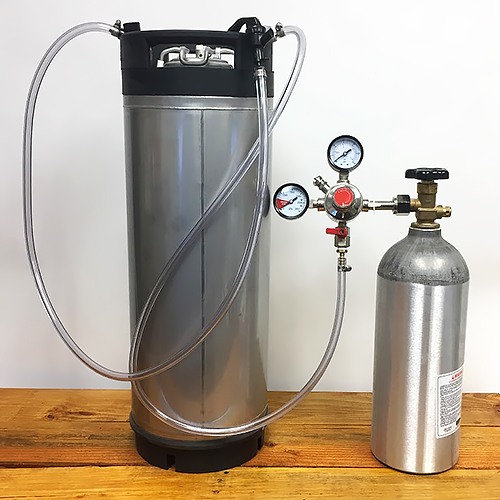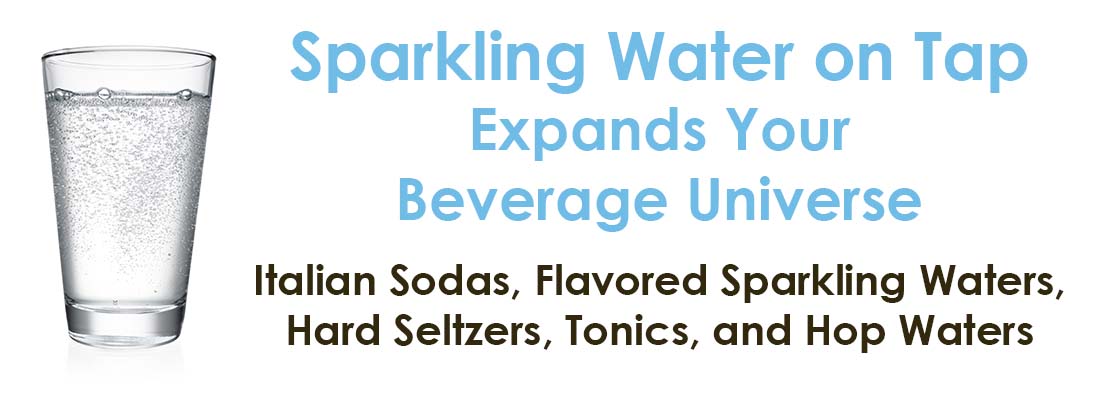
Use QR Code to visit this article online.
How To Make Italian Sodas, Flavored Sparkling Waters, Hard Seltzers, Tonics, and Hop Waters
Copyright by Gabe Jackson and The Beverage People, 2021
It’s famously difficult to turn water into wine, but it’s easy to turn it into soda, seltzer, tonic and other fun drinks! When you put sparkling water on tap, you can quickly and easily make all these drinks. These recipes make some fun for the kids, and some fun for the adults, too.
Click to go directly to the following recipes.
The Benny’s – Why Put Water on Tap?
Sparkling Water on Tap is water that has been kegged, force carbonated, and then served from a tap in a refrigerator. There are many benefits to choosing to put water on tap:
• Many people find sparkling water more interesting to drink than plain water.
• A keg of water supplied by a 5 lb CO2 tank is cheaper to maintain than a Soda Stream system, with fewer trips to the store to replace the empty CO2 canister.
• It’s so easy---just fill up the keg with water and place it in the refrigerator under CO2 pressure. There is no clean up between kegs since only water ever touches the keg.
• Kids and adults will love the ability to make sodas and sparkling flavored waters of many flavors.
• Hop Waters can provide an enjoyable non-alcoholic drink option for beer lovers.
• Adult drink options abound! Hard Seltzers, Tonics, and cocktails can be mixed with endless creativity.
Draft Equipment
There isn’t a whole lot of equipment necessary to set up a basic draft system. Conceptually, there are two sides of a draft system: the gas side and the beverage side. Here at The Beverage People, we have everything you need to set up a Carbon Dioxide (CO2) draft system.
On the gas side you will need:
On the beverage side you will need:
Refrigeration:
- To force gas into solution, the water has to be cold. To keep the water cold, you need a refrigerator.
If you don't have any of these components, our Complete Keg Systems are available that may be placed into an extra refrigerator.

Setting Up the Draft Hoses & Gas
To attach your beverage line and spigot/faucet, begin by heating up some water on your stovetop or in the microwave and put the ends of the tubing in the hot water. The 3/16” tubing we recommend is slightly smaller than the 1/4” hose barbs on the spigot/shank and the black beverage disconnect. Heating it will allow you to easily slip the tubing over the hose barbs. Now attach the gas line to the regulator and secure a tight fit with a stainless steel clamp. Then attach the other end of tubing to the (gray) gas quick disconnect and secure tubing with a stainless steel clamp. Hook up the gas to the IN post of the keg and turn on the gas at low pressure.
I highly recommend pressure testing a new draft system before use. This will help avoid mysteriously empty CO2 tanks.
Kegging & Carbonating the Water
You can think of the keg as one big water bottle. Start with a new keg, or clean and sanitize a used keg, then fill it up with un-chlorinated water. You may choose to add acid or water salts at this time (see discussion below). Once the keg is filled, place the lid back onto the keg and place the keg into the refrigerator.
Put the keg under refrigeration, hook up the CO2 to the keg and set the regulator to about 25 PSI. Leave it hooked up to the gas with the gas open until it is carbonated to your taste, usually 3-5 days for basic carbonation.
Acidified Sparkling Water
A little acid can really make a big difference in sparkling water. Most commonly, citric acid is used. Acid provides an acidity increase to the plain water along with a bit of flavor. You may like to acidify the water as a rule, or just when preparing the carbonated water for use in recipes such as Sparkling Flavored Water, Hard Seltzer or Hop Water.
To acidify a 5 gallon keg of water: Add 1 tablespoon citric acid to a small amount of water and stir until fully dissolved. Add it to the keg of water. Seal the lid and shake well.
Building Your Own Water Profile with RO Water & Water Salt Adjustments
If you don’t like the taste of your tap water, consider constructing your own water profile using RO (reverse osmosis) water. This is a common practice employed by homebrewers to improve their beers. It is also practiced by major drinking water suppliers such as Aquafina, Dasani, and Nestle.
Reverse osmosis water is filtered to remove solids and salt ions to very low ppm (parts per million) levels. The resulting water is effectively a blank slate for you to build your own water profile, but is rather boring to drink in its un-adjusted form. Adjustments are performed by adding back standard water salts to taste. We stock the following salts at The Beverage People, except baking soda and table salt which are standards at the grocery store. You should experiment with them to get the taste you desire. These general guideline will help:
Chlorides
The chloride ions tend to enhance sweetness, the way a little table salt brings out the sweetness of a tomato. But a little goes a long way. Consider using ¼ tsp to ½ tsp per 5 gallons water.
Options:
Calcium Chloride (most common chloride for brewing water)
Sodium Chloride (AKA table salt)
Sulfates
The sulfate ions tend to sharpen the flavor in a way that enhances bitterness. It is used for that purpose in brewing, to offset sweetness and sharpen the bitterness of the hops for a crisp finish. Consider using ¼ tsp to 3/4 tsp per 5 gallons water.
Options:
Magnesium Sulfate (AKA Epsom salt)
Calcium Sulfate (AKA Gypsum)
Carbonates
Carbonates add alkalinity, the opposite of acidity. If you are planning to acidify the water, adding carbonates would be counter-productive. However, if you want alkaline water, this is the salt for you. You can choose between carbonates, and bi-carbonates. Bicarbonates dissolve more readily, so I recommend you work with those. Consider using ¼ tsp to 3/4 tsp per 5 gallons water.
Options:
Sodium Bicarbonate (AKA baking soda)
Potassium Bicarbonate
Drink Recipes
"Italian" Soda
Estimated Calories: 100 calories.
Ingredients:
16 oz Cup full of ice
Carbonated Sparkling Water
Method
Fill your cup with ice. Measure 1 oz of your chosen Flavored Syrup and pour it in. Top with carbonated sparkling water, and stir. Voila! Consider adding a garnish for flare and bonus points.
Sparkling Flavored Water
Estimated Calories: 15 calories.
Ingredients:
16 oz Cup full of ice
Carbonated-Acidified Sparkling Water (instructions above)
Hop Water
Estimated Calories: 30-35 calories.
Ingredients:
16 oz Cup full of ice
Carbonated-Acidified Sparkling Water (non-acidified is fine too)
Hard Seltzer
Estimated Calories: 121-129 calories, depending on usage of simple syrup.
Ingredients:
16 oz Cup full of ice
1.5 oz Vodka
Carbonated-Acidified Sparkling Water (instructions above)
Gin Tonic
Ingredients:
10 oz Cup full of ice
1-2 tsp Tonic Concentrate (instructions below)
1.5 oz Gin
Carbonated Sparkling Water
Method
Fill your cup with ice. Measure 1 or 2 tsp of Tonic Concentrate, depending on flavor intensity preference, and pour it in. Add a shot glass full of gin. Top with about 3 or 4 oz of carbonated sparkling water and stir. Enjoy!
Tonic Syrup Concentrate
Yields about 1 pint.
Method
In a medium saucepan, combine the cinchona bark and 2 cups water. Simmer, covered, for 25 minutes. Remove from heat and strain the liquid to remove the solids. Allow the mixture to rest for at least 30 minutes, then decant carefully, pouring the clear liquid off and leaving behind and discarding the grainy particulates that have settled to the bottom. Add ¾ cup sugar and 1 tsp citric acid for each 1 cup of tonic collected. Seal in a jar and refrigerate until needed.



